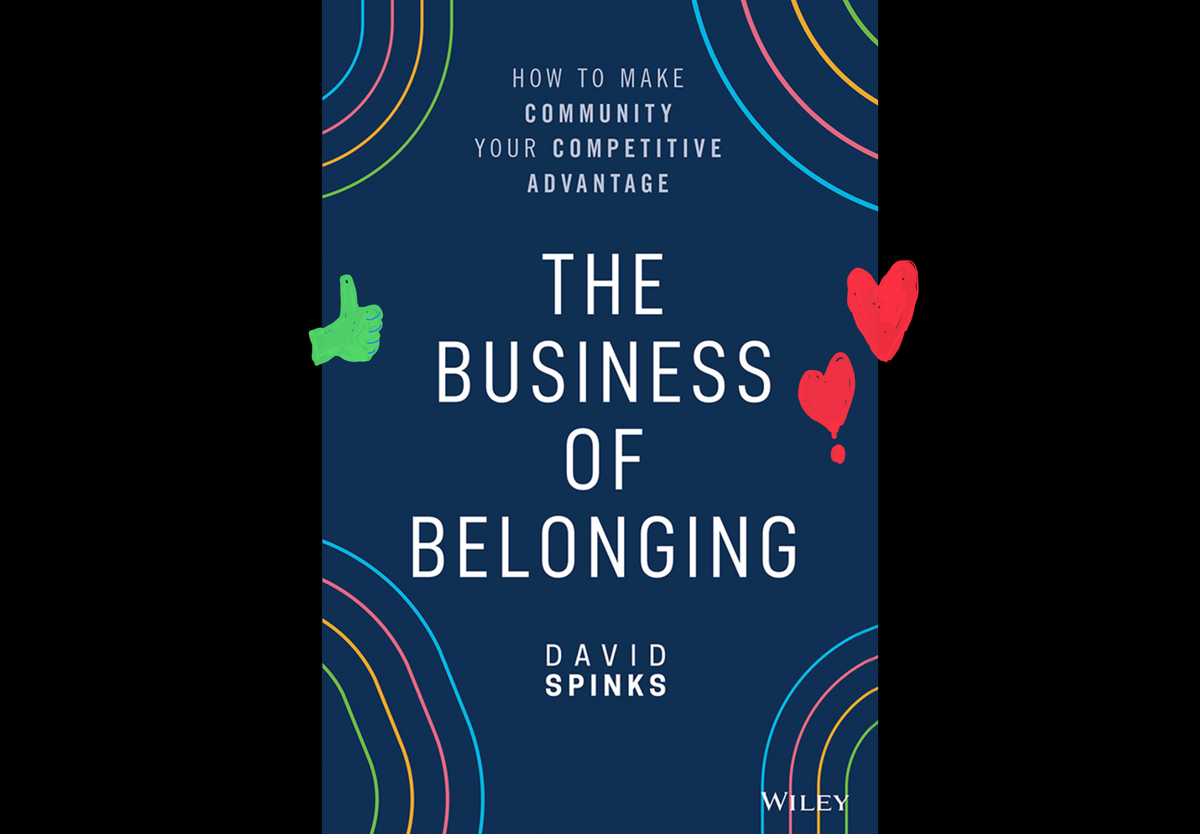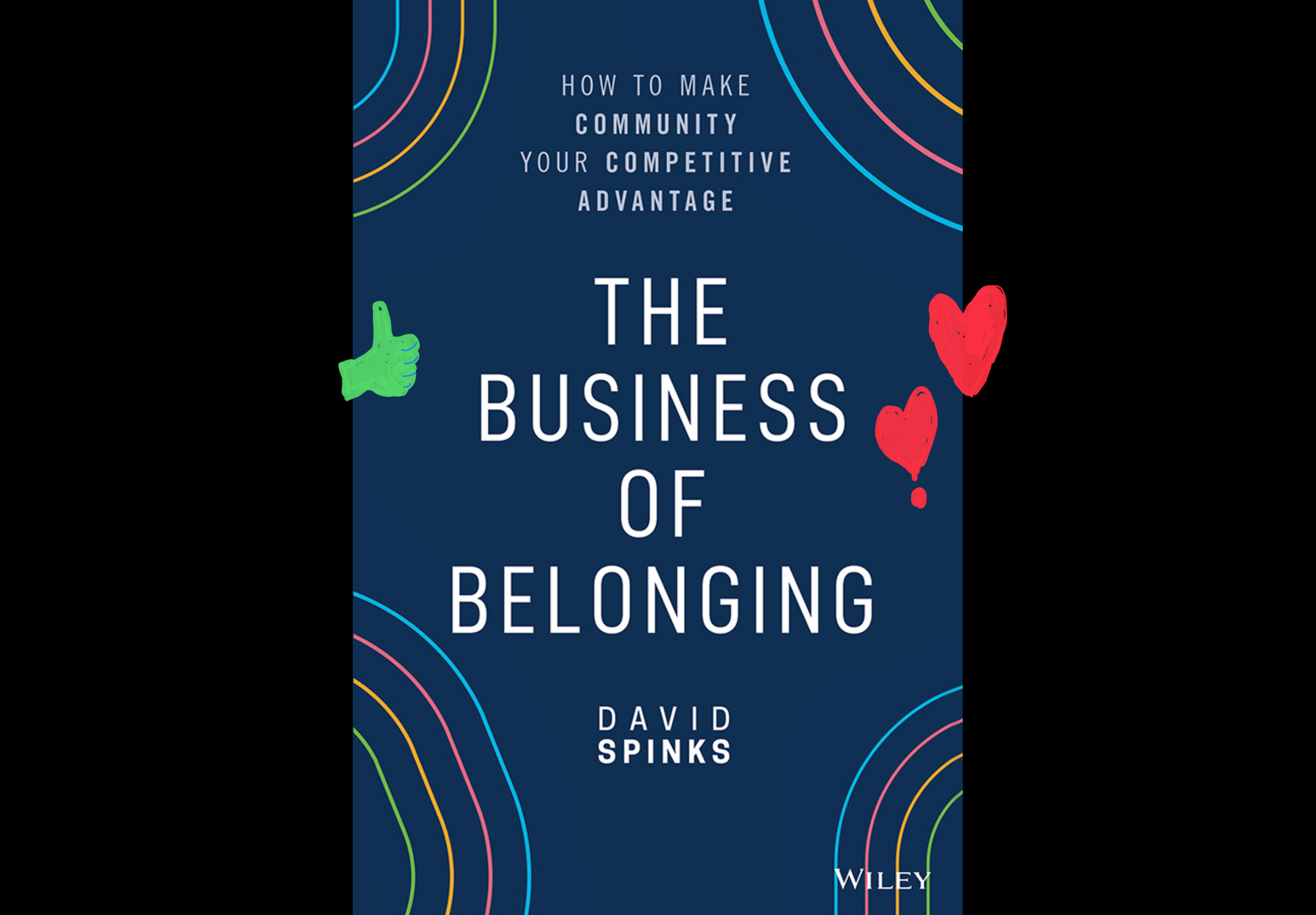15 key community-building takeaways from the book: Business of Belonging by David Spinks
Also, my fan letter for David and his book

David is the founder of CMX - a community of community professionals - and has helped in building hundreds of communities at companies like Udemy and Google using his frameworks.
In his book Business of Belonging, he discusses how a business can create a customer community and use it as an extension of their teams to achieve measurable results in all areas of the business like Product, Marketing, Content and Support.
"What community does is it extends the capacity and impact of each of those teams by organizing community members to contribute to the same kinds of projects and goals."
Takeaway #1: Use Community as an extension of your other teams
David understands this space very deeply because he has built and advised a lot of business communities.
As I was reading this book, I felt like David knew about all my struggles and desires as a Community Manager. He has written one of those rare actionable books that I have put to work right away. My work email is filled with Kindle notes and highlights I sent from this book to myself.
It is extremely practical and has no fluff.
It is no overstatement to say that this book has changed the tragectory of my career as a community professional.

Restarting my career in community building
Like a lot of other community professionals, I got into the community industry accidently. I was hired as a Community Manager for my company before I even graduated due to a cold email I sent to the CEO.
I couldn't have asked for a better first job. But 6 months in and I was already thinking about transitioning to become a marketer or product manager.
That's because I wanted to build my career in a team that leads the business - Marketing does it by selling the product and Product does it by creating it. Compared to them, customer community felt more of a liability than an asset to the business. I thought creating a sense of belonging is good but it can't earn money.
David's book has caused a shift in my perspective.
Well, actually it was the first chapter of his book - where he discusses how community can be the competitive advantage for a business. It is the one thing that competitors cannot copy.
"One reason that community is becoming more important is that it's becoming much easier to build products, but it's always going to be very difficult to copy a community."
Takeaway #2: Communities are built on relationships. This makes them difficult to copy.
He also argues that community can improve retention for the business by adding an emotional layer to switching costs.
"To leave your product would mean leaving their people, their relationships, and sacrificing the social capital they've earned within your community. There's a social cost to leaving your product.
Takeaway #3: Community improves customer retention by adding an emotional layer to switching costs.
After reading the first chapter, it felt like I've been let in on a secret to building a better business. I remember feeling so pumped up after reading it that I finished the rest of the book by the next week.
Creating the Community Strategy
In the second chapter, he dives deep into how to create a community strategy that can create a measurable impact on the business.
One of the big themes of his book is that building an engaged community and achieving business goals should be 2 sides of the same coin.
"The key is to communicate how community engagement is also achieving business goals that impact revenue and growth. They both matter. Business goals without a focus on building an authentic, healthy community will result in low engagement and trust. Community engagement goals without a focus on achieving business goals will result in an underfunded, undersupported community team."
Takeaway #4: Focus on initiatives that improve community health by improving business health.
Prioritising stuff with the 3 Levels of Community Strategy
David and his team has developed a simple strategy for structuring and measuring a community strategy called the 3 levels of Community Strategy:

Whenever I create a strategy for my own community, I refer back to this framework.
This 3-level strategy framework forces me to think about the business needs before I start brainstorming new community initiatives. That's important because it's easy to get lost into thinking about community improvement ideas without tying them back to the company's goals.
Using the 3-level framework makes me confident about the direction I set for our community. Since reading this book, I've had multiple conversations with the CEO and directors at our company where I confidently present ambitious strategies involving the community.
Deprioritising stuff with the SPACES model
Everyone I talk to at the company has been part of some online community. So they all have ideas on improving our community. "Introduce a voting system", "incentivise people with badges", "create interest-based groups", "something with social media", "let's crowdsource content" and tonnes of other such interesting suggestions.
These seem like obviously good ideas. So, I thought that it was my responsibility to experiment with as many of them as I could to make the community really shine.
But David's SPACES model serves as a helpful reminder to not stretch myself too thin.
His team has identified 6 measurable business outcomes that the community can drive:
- Support - customer service and support
- Product - innovation, feedback and R&D
- Acquisition - growth, marketing and sales
- Contribution - collaboration and crowdsourcing
- Engagement - customer experience, retention and loyalty
- Success - customer success and advancement
David warns that community builders in small teams should focus on just one or two of these outcomes unless they want to set themselves up for failure.
Choosing my focus area makes it easier to explain why I'm deprioritising someone's suggestion.
Takeaway #5: Narrow your focus if you have a small community team
Strategic to Tactical
David's book's structure beautifully mirrors his 3 Level of Community Strategy - he discusses high-level strategic stuff in the first few chapters and then smoothly moves into discussing the practical nitty-gritties. Every chapter just flows into the next one.

In the 3rd chapter, David writes how community builders are essentially reinforcing a social identity of their members.
What stood out for me was this simple formula he presented for coming up with new community ideas:
There's a good chance that everyone has some part of their identity where they feel lonely. There's always an opportunity for community. You just need to find the isolated identity.
Takeaway #6: To find new community ideas, look for parts of people's identity where they feel lonely.
In the 4th one, he discusses community participation.
It is in this chapter that he presents the answer to every community builder's problem - how to increase engagement in the community.
His answer? Love your lurkers but prioritise your creators:
Generally, you want to focus your engagement strategy on the inner circles. The Pareto principle applies here, which predicts that roughly 80 percent of the content in your community will be created by 20 percent of your members... You'll grow your community a lot faster by working to get that 20 percent to double their commitment than by trying to get the other 80 percent of your community to increase their commitment by fivefold.
Takeaway #7: To increase community engagement, focus on the top 20% of your members.
5th chapter is all about incentives.
People often suggest votes, points and other "gamification" tactics like they are the Holy Grail to building a better community. After all, these are what they have seen working in large online communities like - Reddit (upvote/downvote), Hacker News (upvotes) and even Facebook (likes).
I have always felt icky about using such incentives. But I had trouble putting my ickiness into words.
Thankfully David did it for me by:
- Differentiating between intrinsic and extrinsic motivators:
Motivation comes in two forms: intrinsic and extrinsic.
2. Talking about the superiority of intrinsic motivation:
Of course, communities work best when members are primarily intrinsically motivated. It's a requirement for true, deep communities. You need members who are there not to receive external rewards, but because they genuinely care about the community and the other members.
3. Yet, not dismissing the power of extrinsic rewards:
Reinforce the intrinsic motivations with praise, social validation, and other extrinsic rewards.
Takeaway #8: Focus on improving intrinsic motivation of your members by giving them autonomy, mastery and purpose.
Takeaway #9: Reinforce the intrinsic motivation with extrinsic rewards like increase in status, networking opportunities, special access and perks.
In 6th chapter, David discusses how to design community spaces and experiences.
This is where things get really practical. If you thought the rest of the book had practical advice, you are in for a treat in this one.
There's too much of meat in this chapter for me to summarise in this article. But here are the pieces that I've already put to practice:
- Importance of both asynchronous and synchronous experiences
Asynchronous experiences provide breadth. Synchronous experiences provide depth.
I realised that my community only ever interacted asynchronously. So, I've started bringing small groups of people together for video chats. It's so exciting to meet the people behind those avatars!
Takeaway #10: Create opportunities for your community to interact both synchronously and asynchronously.
- "The key is repetition and consistency"
David says that the key to building a habit of coming back amongst your members is to have recurring experiences daily, weekly, monthly, quarterly and annually.
Here, I realised that I didn't have enough monthly, quarterly or annually experiences. So, now, I'm brainstorming some.
Takeaway #11: Design daily, weekly, monthly, quarterly and annually repeating events to build habit amongst your community members.
- 7 Ps of Community Experience Design
David suggests that before creating any shared experience, figure out the 7 Ps of that experience - People, Purpose, Place, Participation, Policy, Promotion and Performance.
I recently put together a Community Council comprising of the top participants. Sketching out the 7Ps before starting it - forced me to think about the tactical stuff. Now, I feel much better than I did before doing the exercise.
Takeaway #12: Decide on the core fundamentals of your community by figuring the 7 Ps - People, Purpose, Place, Participation, Policy, Promotion and Performance
- The fundamental question - what platform should you use to host your online community?
Online, a forum with 10 people in it will feel empty, and a chat group with 1,000 in it will feel extremely overwhelming.
My community of thousands lives on a Discourse forum. But I created a Discord chat room to bring the 10 people of the Community Council together. And I'm going to do the same for every new subgroup that I create.
Takeaway #13: Use online forums for large communities, chat based platforms for small communities.
- Tell your members how to participate
Putting people in a room together is not enough for creating a community. You have to tell them how to successfully interact with each other.
So, these days I'm creating guides and playbooks to help my community members understand how to participate.
Takeaway #14: Tell your members how to participate.
And the final chapter, has tips and tricks for the community builder.
Here David shares advice to help the community builder manage their emotions and be successful in their role.
My favourite is the one where he explains the power of personal invitations:
You can use personal invitations to facilitate engagement as well. In the online communities I run, we always have a rule that every question must get at least three quality answers in 24 hours. If it's not happening organically, we make it happen. I'll start messaging other members privately and ask them to jump in and answer the question...
To the person who asked the question, it still looks like organic growth. They just see that a few people answered their question. To the person I ask to help, they feel good because I let them know that I consider them an expert and that they're helping the community in a meaningful way.
What a great little hack to create a win-win situation for everyone in the community!
Takeaway #15: Be the matchmaker in your community
In today's world, information is abundant but belonging is scarce. There's an opportunity for building community all around us.
I, now, aspire to create and lead the community team that creates a competitive moat around the business.
With David's lessons, I feel confident that I'll get to do it soon. And when I do get to do so, I'll be sure to give a copy of this book to every new community person that I hire!
I'm gonna post all my brain dumps about community building on Twitter and LinkedIn. Follow me there if you'd like to follow along my journey as a young community builder. :)

